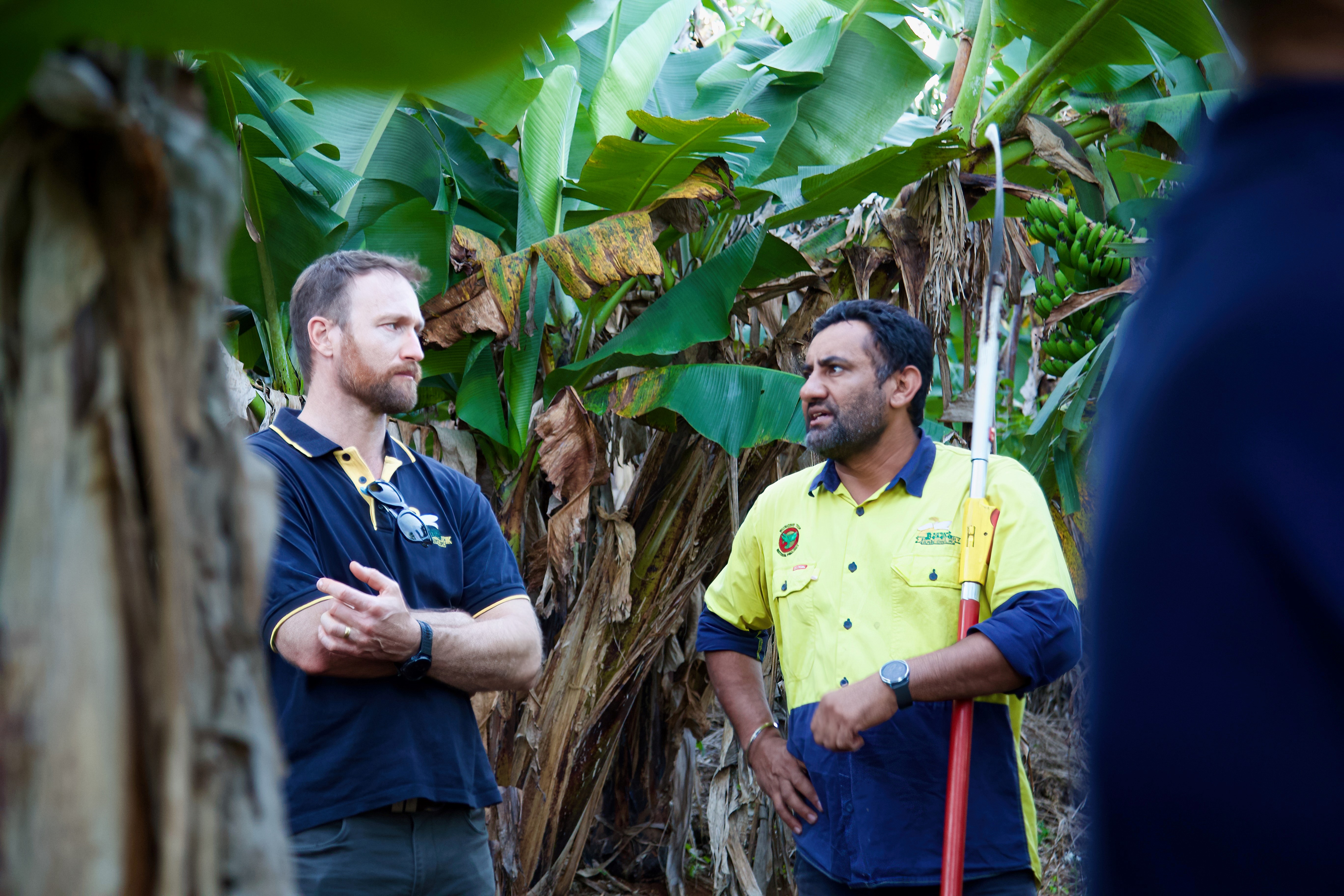
Banana growers managing over 600 commercial banana properties along the east coast of Australia are being armed with an arsenal of tools to guard against significant pests and diseases through a $1.7M collaboration.
Delivered through Hort Innovation and led by the Australian Banana Growers’ Council, the surveillance and grower education program provides an array of tools to protect the $500 million banana industry and educate growers on how to recognise early disease symptoms and manage diseases more effectively. This has been through farm visits, workshops, grower groups and other resources such as videos that provide tips for detecting new infections.
Hort Innovation chief executive officer Brett Fifield said addressing the threat of significant banana diseases, as well improving grower capacity to manage them, is a critical priority for the banana industry.
“Research shows if Panama TR4 alone was to spread widely it would cost the Australian banana industry $5 billion over ten years. The challenge of having to deal with TR4 in combination with other significant banana diseases on a property would have an even more serious impact.”
TR4 is currently contained to Far North Queensland and the Northern Territory. It is considered the biggest threat to Australian banana growers. However, if left unchecked, there are a range of other pests and diseases that could be just as devastating to the banana industry and the communities it supports. Losses through on-farm management of leaf diseases (yellow Sigatoka and Leaf Speckle) run to tens of millions of dollars per year and, if Banana Bunchy Top Virus (BBTV) were to spread in Far North Queensland, losses have been estimated at $16-20 million per year.
“That is why the banana industry is investing its levies heavily into a suite of programs through Hort Innovation that reduce the spread and impact of pests and diseases and ensure any new incidents are picked up as quickly as possible,” Mr Fifield said.
Australian Banana Growers’ Council project leader Rosie Godwin said the goal of the surveillance and education project is to boost the banana industry’s ability to prevent, manage, and reduce the impact of biosecurity threats.
“The presence of Bunchy Top on a property, if left unchecked, can make a business unviable within 18 months. On top of that, Bunchy Top symptoms alongside heavy infestation of Leaf Spot and Leaf Speckle could mask symptoms of TR4 and reduce the efficacy of surveillance, detection and containment,” Dr Godwin said.
“By directly including growers and farm advisors in surveillance and biosecurity programs, we are supercharging our biosecurity efforts and increasing the likelihood of early detection. Banana growers know their own properties better than anyone else, so even a little bit of training goes a long way.”
Third-generation banana grower and ABGC director Andrew Serra, from Tolga in Far North Queensland, said the project provides growers with the tools they need to be on the front foot when it comes to protecting their property and the industry more broadly.
“The ABGC team provide invaluable surveillance and training for banana growers like myself. As far as I’m concerned, we have got more than enough to deal with when it comes to pests and diseases, particularly with TR4. If Banana Bunchy Top was detected in the major production areas of Far North Queensland on top of that, it could decimate our industry, let alone any other biosecurity threat not currently present in Australia.”
Mr Fifield will be speaking more about this project and other Hort Innovation investments for the banana industry at the Australian Banana Congress tomorrow at 8am.
